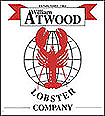Il
Bucranio
Luckily, to sample Apicius recipes,
you don't have to translate his Latin. By appointment between
mid-March and Christmas retired U.N. interpreter Giulia Passarelli,
a disciple of Apicius, will prepare ancient Roman holiday feasts:
Liberalia” (March 20 for the vernal
equinox), Megalesia” (April for
the arrival of spring), Agonalia”
(May 21 to protect your home) to name a few, or even a tombside
funeral banquet (silicernium)
The ancient Romans
ate with their hands while lying on couches. But in her peaceful
garden beside a 2nd-century B.C. tomb Giulia serves her guests
at two long tables, shaded by canopies and set with modern utensils.
Typically her feasts of 12 dishes (usually nine salty and three
sweet) are selected from the 100 or so of Apicius' 470 recipes
that she's updated.
First comes an array
of gusta (appetizers), among them epityrum”(olive
pie), puls fabata” (broad bean
soup with sauages) and Laganum”
(the ancestor of lasagna). They are accompanied by mulsum,
honey-spiced white wine made by her wine-historian brother Ernesto.
His rosatum (rose and violet wine) accompanies
the next course of primae mensa (entrees):
isisca” (baked sausage made of
differently spiced seafood, chicken or veal sfondilos”
(charcoal grilled kebabs of minced artichoke heart wrapped in
bacon), sumina assa”(roast sow's
udder), murena assa (grilled eel),
or betas et porros” (boiled beets
and leeks in raisin sauce), among others.
After the primae mensae Ernesto uncorks
passum or mulled red wine for the secundae mensae
or desserts: fresh fruits in season, dactylos piperatos”
(baked caramelized dates stuffed with chopped nuts and dried fruits
and wrapped in bacon), and dulcia domestica”
or mustei” (several types of unyeasted
pastries made of flour, wine, honey, dried fruits, chestnuts,
and nuts).
Visitors who don't have time for a silicernium
are also welcome. The 5-euro entrance fee includes a visit to
the tomb and a refrigeria of mulsum
and moretum (garlic-laced cheese spread)
and bread, the snack the ancient Romans ate tombside on post-funerary
visits.
Via
Appia Antica 187A;
tel. 011-39-067857151.
Open by appointment. Groups preferred.
Laurel
wreaths, togas, and high priest and
Vestal
Virgin vestments available.
|




















